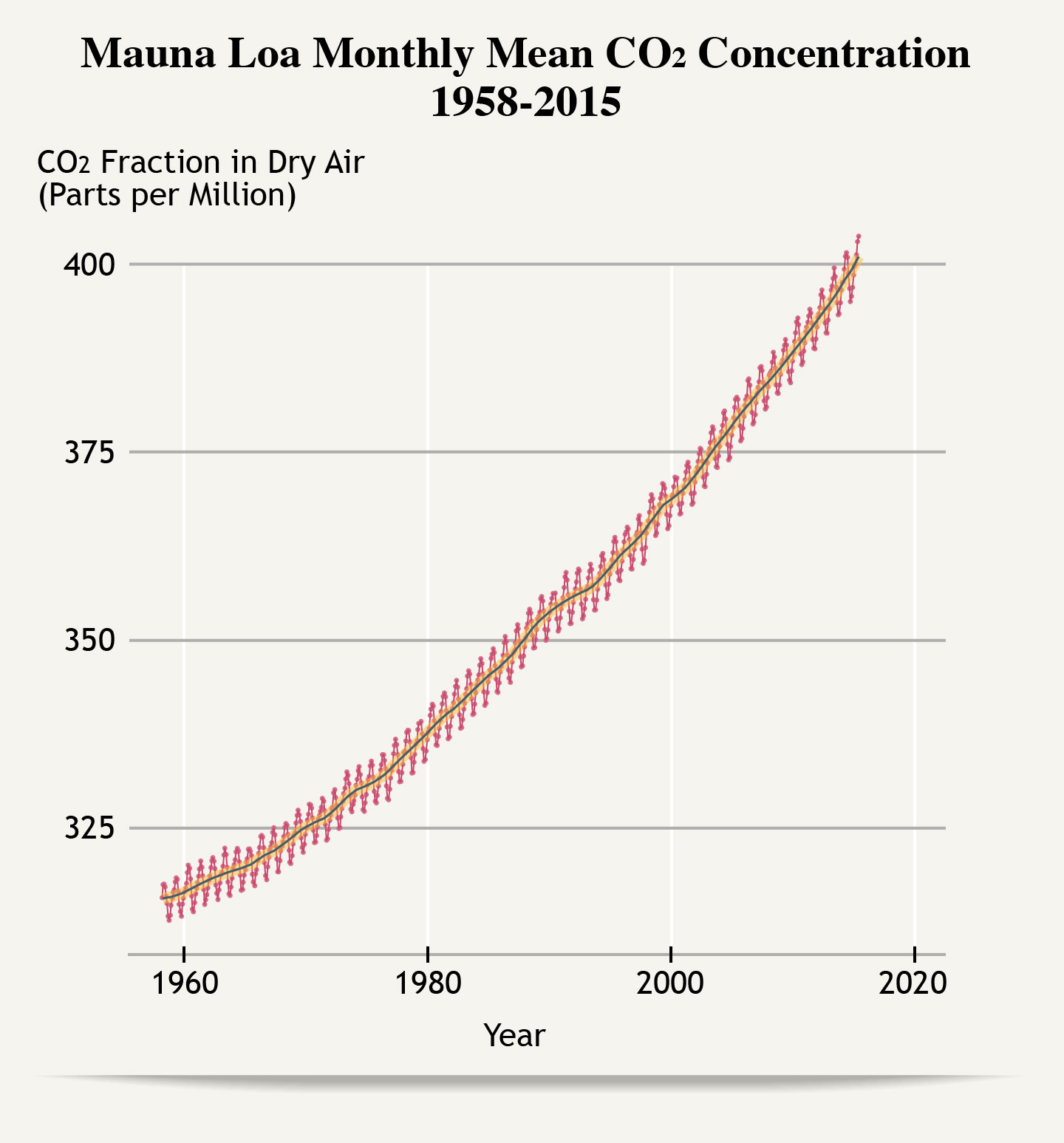Environmental Impact
NASA
Environmental Impact
The combustion of fossil fuels releases carbon dioxide (CO2), a major greenhouse gas (GHG), into the atmosphere, and there is strong evidence that the buildup of GHGs is the primary cause of the global warming that has occurred in recent decades. CO2 concentration in the atmosphere has risen about 43% since the beginning of the industrial revolution in the mid-eighteenth century—half of that since 1980.
Temperature readings from around the globe show a relatively rapid increase in surface temperature during the past century, with an especially pronounced warming trend during the past 35 years. Because the effects of CO2 and other GHGs, such as methane and nitrous oxide, result in more than just rising temperatures, a more accurate term is “climate change,” which helps convey that other changes—such as sea-level rise from thermal expansion and ocean acidification from increased absorption of CO2—are taking place as well.
Climate change will have a range of impacts. In some parts of the world, it could bring positive effects such as longer growing seasons and milder winters. Unfortunately, however, it is likely to bring harmful effects to a much higher percentage of the world’s population. And many of the world’s poorest people, who lack the resources to respond to the impacts of climate change, are likely to suffer the most.
At present, the United States emits about 16% of the world’s GHGs, behind only China, which accounts for approximately one-quarter of total global emissions.
In recent years, as a result of thermal expansion and glacier melt, the global average sea level has been rising at about 3 millimeters (1/8 inch) per year during the past 20 years, threatening inundation of areas with low elevation. For example, Bangladesh, one of the world’s most impoverished nations, is projected to lose 17.5% of its land if sea level rises about 1 meter (39 inches), displacing millions of people. Several islands in the South Pacific and Indian oceans may disappear entirely.
At present, the United States emits about 16% of the world’s GHGs, behind only China, which accounts for approximately one-quarter of total global emissions. Assuming diminished reliance on coal for electricity, America’s CO2 emissions are projected to decrease slightly during the next 25 years, from about 5.3 billion metric tons in 2015 to 5.0 billion metric tons in 2040, assuming no changes to the control of carbon emissions. However, such controls could take place if the United States adopts some form of a “cap and trade” system or a carbon tax to control CO2 emissions in the United States.
Of course, climate change is not just a national concern. All countries share the same atmosphere. Worldwide, CO2 emissions are projected to increase substantially, primarily as a result of increased development in China and India. Therefore, future global decisions about whether and how to limit GHG emissions will affect us all.
Related topics
Source Material
- America’s Climate Choices (2011)
- An Ecosystem Services Approach to Assessing the Impacts of the Deepwater Horizon Oil Spill in the Gulf of Mexico (2013)
- Hidden Costs of Energy: Unpriced Consequences of Energy Production and Use (2010)
- Climate Change: Evidence and Causes (2014)
- Effect of U.S. Tax Policy on Greenhouse Gas Emissions (2013)

